This is crossposted from Tumblr here for reasons of being able to find it later. Note: some images NSFW. Further note: ~3000 words, very image-heavy; they're not all loading for me rn, so maybe the Tumblr version is a better bet. I've been writing this in my head for two years and I finally told myself I can't make any new sideblogs until I post it, so here it is.
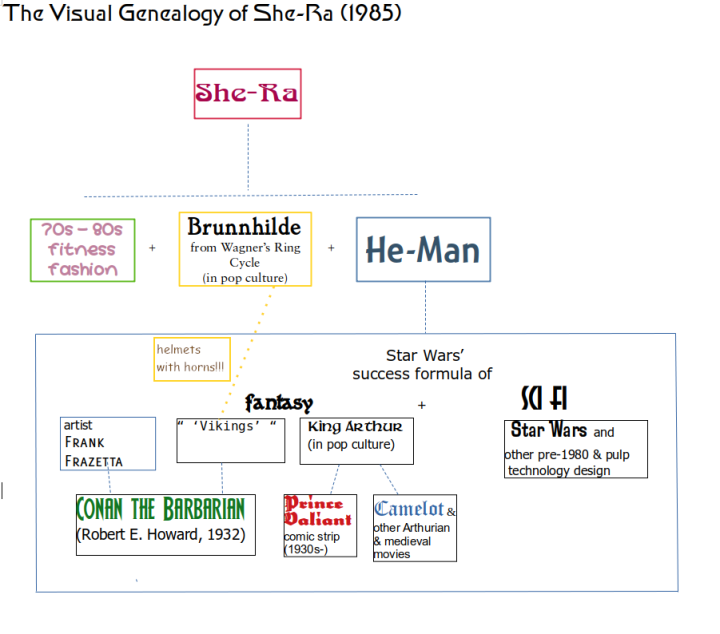
I spent way too long making this graphic because of the fonts and colors, but it’s a simple claim.
The visual design of He-Man, the show, was deliberately a combination of sci-fi (the look borrowed mostly from Star Wars, then huge in toys after 1977′s A New Hope) and fantasy (He-Man himself based on the Conan art of Frank Frazetta; the setting, “Etheria”, drawn from pop culture images of King Arthur’s Camelot). Therefore, STAR WARS + (CAMELOT/MOVIES + PRINCE VALIANT) + CONAN THE BARBARIAN = HE-MAN.
She-Ra was conceived as a spinoff of He-Man, and the visual design of the technology and medieval-inspired settings were carried over, but the character designs were created to appeal to girls based on a combination of fitness/ice skating fashion and the iconic pop cultural conception of Brunnhilde and the Valkyries from Wagner’s Ring cycle operas: HE-MAN + BRUNNHILDE + FITNESS FASHION = SHE-RA.
Don’t worry (you weren’t worried)! I have receipts.

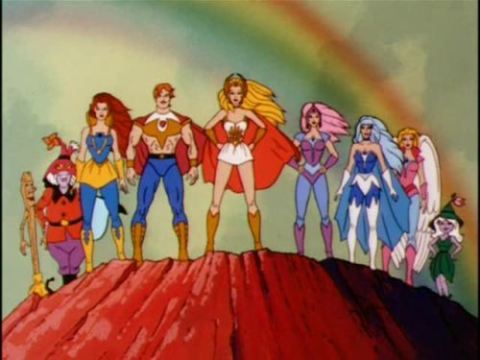
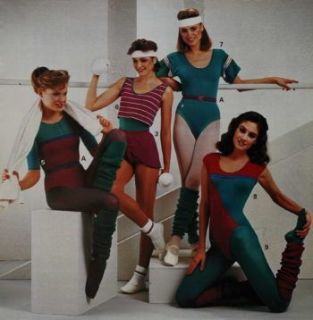
But actually, let’s start at the beginning: the creation of He-Man, the toy.
According to these interviews from 80stoyshop.com with Mattel designer Roger Sweet, Mattel called for its design department to pitch the next big male action figure in early 1980 after passing on the rights to the Star Wars toy franchise because they wanted an tremendous sum upfront. There were three pitches heard and Sweet’s Conan-inspired one ultimately won.
Sweet doesn’t admit to copying Conan, of course, but in his words:
“I had been real impressed by Frank Frazetta paintings and I [submitted an idea] that I called monster fantasy. But it was actually a barbarian fantasy.”
Frank Frazetta, the iconic fantasy artist, is well known for his Conan the Barbarian paintings, although his popularity in fantasy art, particularly cover art, and even album cover art, was at a peak in the 60s-70s, when he was also at peak productivity.

His book cover "Conan the Adventurer" by Robert E. Howard and L. Sprague de Camp in 1966 caused quite a stir in the fantasy art world. The series ended up selling approx. 10 million copies in a few short years (the 1960s equivalent of Harry Potter in terms of popuarlity). Frazetta redefined Conan's look and dramatically altered the visual look of the fantasy genre as hordes of artists started copying Frazzeta's style, influencing generations of fantasy artists. Jeff Jones, Berni Wrightson, Michael Whelan, Don Maitz, Boris Vallejo, Arthur Suydam, Simon Bisley and many others were inclined, inspired or instructed to paint in this new, dynamic "Frazetta" style.
-[arthistoryarchive.com]
To be fair, Frazetta obviously produced many paintings that weren’t of Conan, but everything he painted was so extremely Frazetta-styled that they pretty much have the same look anyway (the above link contains many examples, but be aware Frazetta’s work tends to the NSFW). Besides, Sweet calling it a “barbarian fantasy” is a pretty strong indication of which Frazetta works he had in mind. Also pretty telling: the original design for He-Man was a brunet. Back to the Sweet interview:
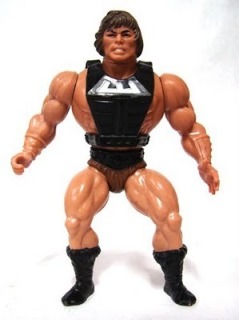
“The very first prototype He-Man was black haired with a deeply tanned eastern European or Middle Eastern appearance. His helmet had no horns. Later, at the direction of Tom Kalinske, then in Mattel’s upper management, He-Man was made more clean-cut and changed to a blond… Plus, He-Man’s skin was lightened, though definitely still tanned.”
The first He-Man toys were released in 1981, which was ultimately why Mattel won this lawsuit. Mattel was in talks to produce licensed tie-in toys for the 1982 Conan the Barbarian movie starring Arnold Schwarzenegger, and pulled out of the deal, after which the rights holder claimed He-Man had been developed as a tie-in for them and then the work kept; however, the toy was documented in existence, and even mentioned in the contract signed between Mattel and the rights holder, before the tie-in negotiations. The claim is a persistent urban legend, for obvious reasons; however, I think it’s safe to say the inspiration, while Conan, came from the books and comics, not the Ahnold.
Another tidbit from the Sweet interview that I want to point to is his namechecking of Star Wars as the initial impetus for the call for toy pitches - ie He-Man was created to fit a brief that was specifically calling for a toy property to replace Star Wars in their product line: a Star-Wars sized world, as it were. Later in the interview Sweet adds that
“[...] I originated and named He-Man, and originated the general concept of the Masters Of The Universe. I constructed three prototype figures [...] They were all of He-Man in different themes and configurations. One had a barbarian theme from the ancient past (low tech), another had a current military enhanced theme (mid tech), and the other one had a futuristic military, a la Star Wars, enhanced theme (high tech), showing that He-Man can go anywhere, and do anything, at any time, in any theme.”
Sweet wouldn’t have been responsible for the marketing of He-Man of course, but the ‘barbarian fantasy’ Conan-esque imagery and the Star Wars-inspired technology imagery both persisted into the show, alongside the Camelotesque castle and characters I mentioned in the introduction.


“Barbarian”-style settings for battles (resembling highly colorful deserts) and evil lairs (usually looking like Indiana Jones or Lara Croft sets and in this case featuring a Cthulhumythosesque creature). It’s easy to find pre-1980 Conan art that resembles these, but as the Indiana Jones resemblance hints, it’s also just more generally pulp fiction and fantasy settings. Castle Grayskull, the ancient fortress presided over by the Sorceress and the source of He-Man’s power, very much belongs to this realm.

Below: A Boris Vallejo cover for Marvel featuring Conan and Red Sonja and reminiscent of both the above image with He-Man and his bodyguard Teela, and several iconic Frazetta paintings.

Frazetta also does a very nice evil lair, like so:
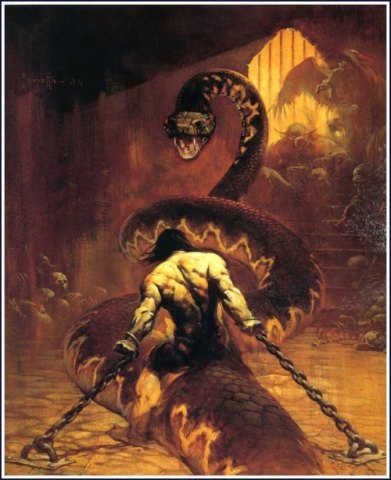
Above: Frazetta's cover for Conan the Usurper; or why not alternatively trye this NSFW (female-presenting nipple) cover for Conan the Avenger feat a sinister altar and attempted sacrifice.
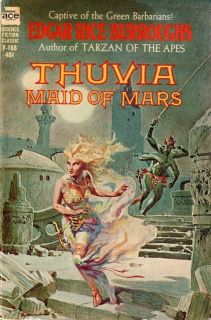
Here’s a cover painted ca. 1920 by Roy Krenkl Jr for Edgar Rice Burroughs’s John Carter/Barsoom series, a pulp classic, showing the genre-typical melodramatic lighting and sinister ancient stone architecture. Conan creator Robert E. Howard has named Burroughs’s Tarzan as an influence on his initial conception of Conan.
Moving on to the technology of He-Man, the Star Wars influence isn’t hard to see, nor is it a big leap of logic given the Star Wars -related genesis of the He-Man toys and the incredible popularity of Star Wars toys in the early 1980s.
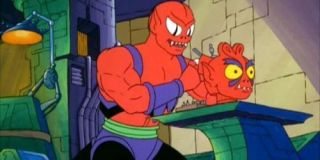

Horde technology, which is seen more often in She-Ra but shows up regularly in He-Man as in the top image of Modulok, is very Star Wars -esque.
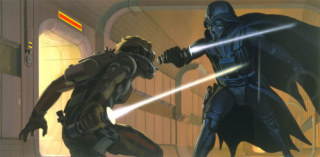
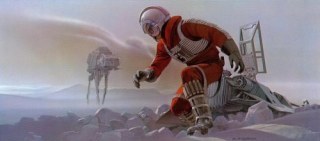
(Concept art for Star Wars by Ralph McQuarrie)
The addition of Prince Adam, He-Man’s mild-mannered alter ego and heir to the throne of Eternia, was done during the development of the cartoon: as originally conceived, He-Man didn’t have a secret identity. I don’t have any information on why one was wanted for him, except perhaps for plot convenience, and of course it’s a standard element of a superhero story. It’s possible that the idea of an Age of Chivalry, Camelotesque society for Eternia came from looking at the rest of the fantasy genre, outside of barbarian fantasy, that is; and King Arthur would likely have been what leapt to mind for the creators in the early 1980s.

They would have grown up in the 1960s and 70s, when the Lerner & Loewe musical Camelot (based on the novels of TH White, including The Once and Future King) was sweeping the US, first on Broadway and then on a series of tours culminating in the 1967 film (which flopped, so this is the stage cast, featuring Richard Burton and Julie Andrews).
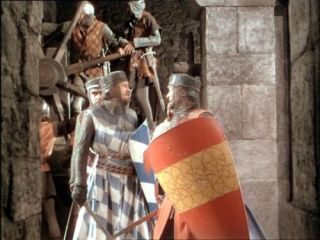
Robin Hood, in a series of popular movies and tv from the 1950s through the 1960s, and Ivanhoe (pictured above), the 1952 movie starring Elizabeth Taylor, were other examples of pop culture medievalism at the time: Age of Chivalry about covers it; candy colors and knights in shining armor were in; muddy browns and plagues were out (although to be fair to Ivanhoe, it’s probably the most realistically costumed of the Hollywood medieval movies of this era).

But of course, the main connection between He-Man and Arthuriana is the hairstyle Prince Adam shares with Prince Valiant.


Prince Valiant is a comic strip started in 1937 and set in Arthurian times which is still being published today, although it’s changed artists and writers a couple of times. In it Valiant becomes a knight of the round table after beginning as Sir Gawain’s squire (and goes on to visit every corner of the globe and have a bunch of children who have their own adventures). But just focusing on pre-1980 images relevant to Camelot:


Above, Camelot; below, Castle Eternia.

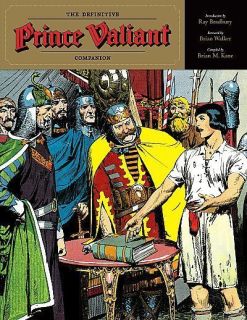
Prince Valiant wearing his most Adam tunic I guess
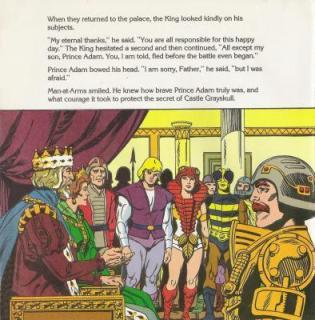
Prince Adam's parents on their thrones
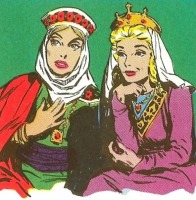

Ladies from Prince Valiant vs He-Man and She-Ra’s mother... though she’s a bit more Julie Andrews in Camelot:
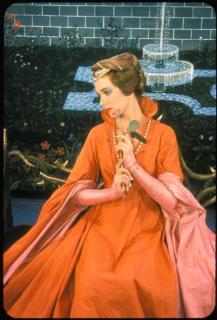
...This concludes my He-Man receipts. But what about She-Ra?
She-Ra came out in 1985, after a few years of He-Man, the cartoon, and four years after the creation of He-Man, the toy. This was nearer the height of Star Wars’s popularity, and its influence is much more obvious on the worldbuilding of She-Ra, where we have Hordak, a much more powerful member of the Horde than Skeletor, ruling over the entire planet from the Fright Zone, a military base built in Horde style. (Skeletor’s lair is a cave - not very Horde but extremely Conan.)
She-Ra even took the Horde troopers, which originally looked like this when appearing on the He-Man cartoon (L) and turned them into these much nearer facsimiles of Star Wars’s storm troopers:


To say nothing of Adora’s “didn’t know she had a long-lost secret twin brother who wields a magic sword” bio.
Here, for example, are some more of Ralph McQuarrie’s beautiful Star Wars concept art paintings:


- showing the rundown, ill-lit junkyard look in Star Wars which prevails both inside and outside the Fright Zone. You can see bits amd pieces of its influence in these screenshots from She-Ra.

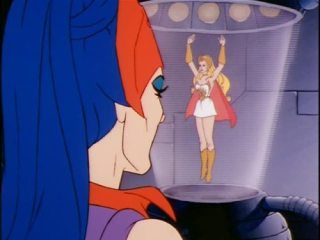
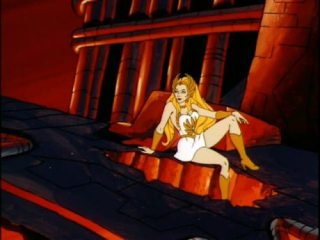


The equation-or-family-tree image at the top of my post indicated two other ingredients besides He-Man’s stew of Star Wars, Conan, Camelot and assorted other pulp fiction imagery: Wagner (or rather, Valkyrie costumes from Wagner opera) and 80s fitness gear.
This was for the simple reason, alluded to above, that the female costumes in He-Man are even more ridiculously sexist than the spike heels and miniskirts worn by the rainbow-colored female characters in She-Ra: their portrayal comes straight from Conan and other pulp adventures, where the order of the day is metal bikinis, only with a one piece swimsuit underneath, presumably to pass the censors.

He-Man’s Teela and Evil-Lyn (above) vs typical Conan art outfits for women (when they’re clothed) paintings/books first and comic book art following:


Obviously these didn’t strike Mattel as odd outfits for an evil sorceress or a professional bodyguard, but they did realize they weren’t optimized to appeal to little girls. (The Sorceress is actually even cooler, arguably, than most of the She-Ra dolls, but the wings being hard plastic made her less convenient to play with.) They needed inspiration from elsewhere for a female superhero look that could fit in general with the Masters of the Universe aesthetic while being, well, not a fur or metal bikini. The fantasy genre wasn’t giving them a lot of inspiration.
The women in Conan and other barbarian fantasy genre stuff occasionally went as far as an art nouveau gown rather than a bikini; Arthuriana and other medieval-inspired fantasy had come up with some outfits that were very far from accurate medieval gowns, but nothing like the female superheroes familiar to the world. Supergirl and Wonder Woman in DC comics were both fighting in hotpants at the time, which is why I really suspect the brainstorm behind She-Ra’s costume went via the “Viking” elements of He-Man’s look - an early prototype for He-Man featured a horned helmet, and his outfit was otherwise associated with Viking costumes in the popular imagination through cartoon and comic depictions, although it should be noted the clothes worn by real Vikings were more like the Prince Valiant images above than like He-Man.
Some of the most recognizable pop culture images for Vikings and for horned helmets, then as now, are from the operas of Wagner’s ring cycle:

(Although Vikings didn’t actually wear horned or winged helmets - common misconception! - Germanic tribes did, so Wagner is fine here; people associating its imagery with Vikings are incorrect, but that’s irrelevant for MOTU’s purposes.) The ring cycle is based on Norse sagas and folklore, but was written in the 1860s, and the Valkyries have been portrayed pretty similarly since the very beginning: long drapey gowns, elaborately decorated breastplates, capes, helmets with wings or horns or birds, and of course, weapons.
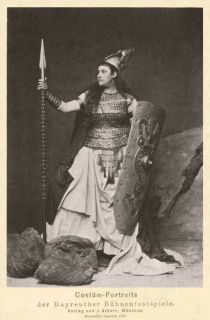

I have no idea how accurate these are overall; however, Wikipedia indicates some of the legends of the Nibelungenlied have connections to events of the 5th-6th centuries CE; and the costumes are at least broadly informed by what is known of the dress of Germanic tribes in this period, primarily from Roman historians. There is no historical evidence of Valkyries existing; but breastplates and winged or horned helmets go with germanic tribes of the period. The costume you see on these sopranos and on Bugs Bunny is Brunnhilde, leader of the Valkyries and daughter of Wotan in the opera, and I assume the origin of her outfit being specifically white and red has to do with the need to distinguish her from all the other valkyries on the stage.


Costume sketch by Charles Bianchini for the Paris Opera 1893; costume worn by Lillian Nordica as Brunnhilde (ca. 1870s-90s)
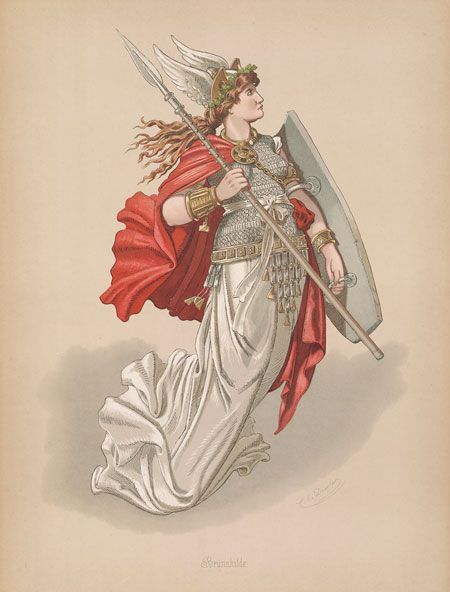
Carl Emil Doepler’s costume design for Brunnhilde for the 1876 premiere of Der Ring des Nibelungen at Bayreuther Festspiele
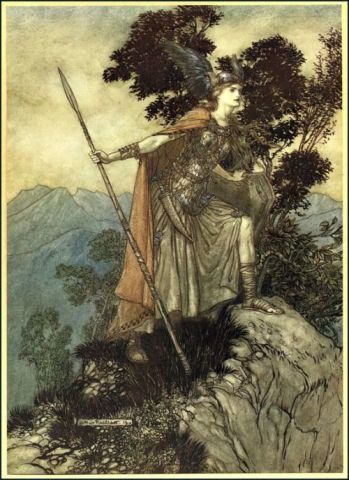

Arthur Rackham illustrations of Brunnhilde from a 1910 edition of The Rhinegold and the Valkyrie, by Richard Wagner
I don’t have any proof of this association, but She-Ra’s winged headdress is the key, to my mind. Who else wears a winged headdress? It’s pretty much limited to Thor (also no doubt derived from Wagner costumes), She-Ra, and cartoon Vikings and germanic tribes. She-Ra’s strapless minidress and cape is only vaguely similar to Brunnhilde, but the remnants of the gold boob decorations are there and even the breastplate; and the white and red is likely borrowed from Brunnhilde too, since you don’t see it much in Viking art.
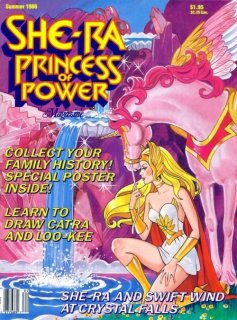

That leaves us with the final ingredient in my thesis: 80s fitness fashion. I don’t have any evidence for this either, but I think there’s a strong similarity, particularly when you see how common colorblocked contrast legwarmers pulled up over the calf were in the 80s.


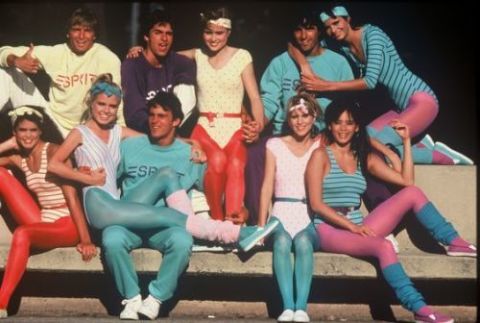
The style of miniskirts worn by She-Ra and Castaspella there were pretty common in the 80s otherwise:

...and that’s probably partly due to figure skating taking the world by storm in connection with the 1984 Winter Olympics.




And that’s the end of my receipts, so I guess it’s time for a conclusion... unfortunately I didn’t really think about that in advance.
In a way, the costumes of She-Ra and her allies were an improvement on comic-derived superheroines; the fact they could all pass for dance and gymnastics costumes at the time demonstrates their superior realism for fighting, although again, that’s only if you ignore that they’re mostly strapless; and from the toy design point of view they were probably a huge success, because the She-Ra dolls were all clearly based on the same mold with very little modifcation and they were primarily distinguished by colors (personally I was always really offended by the dolls who didn’t have tights matching their cartoon costumes), yet everyone wanted all 35 of them or whatever (this is an exaggeration, but not if you count the accessories). They were definitely an improvement on female representation in He-Man, comics and most other cartoons.
Visually, too, they worked pretty well onscreen, particularly the colors, which matched the colorful backgrounds designed for the show.

In terms of worldbuilding, well, they didn’t... really... make sense with the rest of the more-or-less medieval world of the show (although they were no worse than the Conan/Star Wars outfits on the He-Man characters), but at least there’s magic for an excuse.
If She-Ra and He-Man are actually just the forms they are changed into by magic swords left by a race of long-dead ancients who also created a bunch of mysterious places of power across the galaxy, like the Sorceress’s lair at Castle Grayskull and the Crystal Castle, then it would probably be better for their look to be more ancient anyway (although given the appearance of the two castles in question it’s fair to say the Ancients had a lot of stylistic range, though it should be noted the toy castle bore no resemblance to the Crystal Castle seen in the cartoon; the art below kinda shows them together with the cartoon one, which looks like a piece of Art Nouveau jewelry, on top of the toy one, which looks more or less like a renaissance palace except the stone is all pink).

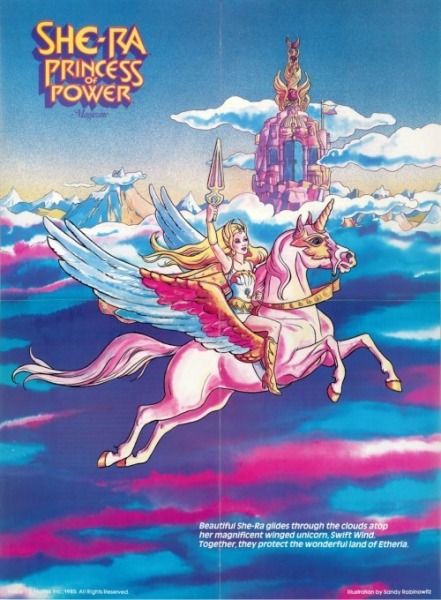
There isn’t really that stylistic unity though, since most of He-Man’s friends and enemies are in the same ~barbarian fantasy~ style and there are few touches in his armor reminiscent of She-Ra’s (or vice versa). Later redesigns for the He-Man centric comics and relaunches and collectors’ toys over the years have at least addressed creating these similarities between the two super looks, but the exclusion of She-Ra and Etheria from... everything done with the property between 1985 and now has dissuaded me from paying very much attention to them. Still, there’s a lot of space for world-building there!
IMO, the whole Ancients idea was the most underused feature in He-Man and She-Ra; I get the idea it was kind of a deus ex machina, an attempt at Star Warsifying a Sword in the Stone narrative. This post isn’t at all about the recent Dreamworks She-Ra reboot, but exploring the Ancients more was something they did very well (redesigning costumes and characters was another). It would be cool to see a more Ancient look (perhaps more Art Nouveau, a direction the Dreamworks cartoon already went) for He-Man and She-Ra and all the Ancient tech to differentiate it from their contemporaries. Also would love to see their armor looking more Wagnerian! -- Okay, I tried, but this post doesn’t really have a moral. I just thought it was all really interesting.
(no subject)
Date: 15 Dec 2020 09:47 pm (UTC)(no subject)
Date: 17 Dec 2020 03:18 pm (UTC)(no subject)
Date: 17 Dec 2020 10:56 am (UTC)(no subject)
Date: 17 Dec 2020 03:18 pm (UTC)(no subject)
Date: 17 Dec 2020 09:47 pm (UTC)(no subject)
Date: 19 Dec 2020 09:56 pm (UTC)